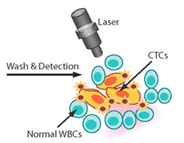 |
 |
|||||||
| February 24, 2011 | Research Extras View the Community Benefits book: Care, Compassion, Service to learn about the many contributions of WHSC. This month's Emory Magazine includes articles about research and faculty in the WHSC. Search for Emory clinical trials. View WHSC research videos on numerous topics. Listen to archived Sound Science podcasts. See the new Emory Health magazine.
|
|||||||
|
Ann Rogers, PhD, RN |
||||||||
| |
||||||||
Sound Science: Weighing In on Sleep and Body Mass |
||||||||
| Study Ranks Emory Among Top Five Public Contributors to Drug Discovery A study published in the New England Journal of Medicine finds that Emory University is the fourth largest contributor to the discovery of new drugs and vaccines by U.S. public-sector institutions. The contributors include federally funded universities, research hospitals, and federal laboratories, such as the National Institutes of Health. Read more. . . |
||||||||
| Mitochondria Protein May Play Early Role in Parkinson's Disease Problems with a protein in mitochondria—the miniature power plants of cells—may be an early step in the progress of Parkinson's disease. Researchers have found that the protein MEF2D, which helps brain cells withstand stress and toxins and keeps mitochondria well tuned, is especially sensitive to impairment in Parkinson's disease. Read more. . |
||||||||
| Nanoparticles May Help Detect Circulating Tumor Cells Oncologists are experimenting with new techniques to detect circulating tumor cells in the blood of cancer patients. Emory and Georgia Tech scientists are trying to improve the accuracy of these tests by using gold nanoparticles embedded with dyes that can be tracked with laser spectroscopy. These tiny particles could help physicians evaluate the progress of treatment or monitor patients for metastasis. Read more. . |
||||||||
|
Michael Davis, PhD
|
||||||||
Brain Chemical Linked to Migraines Could Be Target for Anxiety Therapy |
||||||||
 |
 |
|||||||




